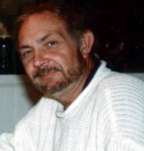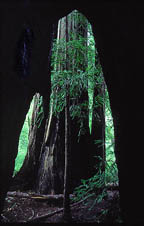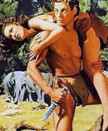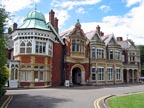|
My salute to Alan Pearson,
a pioneer of the jet age.
First Salute to the Jet Age
By
Wallace Wood
Click any image that has a red star for a larger view
for a larger view
He was a small man-in height. Bent
down with age. British accent for both he and his wife, who were living
in a small "mobile home" among the towering redwoods of the
Santa Cruz Mountains of Northern California. Clearly, this was not their
native land. But they loved it, and lived as best they could on the
small retirement income from Alan's military days.
Everything seemed
small next to those mighty redwoods that speedily grew like giant
weeds in the coastal mountains. The place had been logged flat once
in the timber rush following the gold rush of the mid-1800's. Lumber
for the beehive of San Francisco and the cities of the peninsula
that were another kind of weed growing in the 1900's. But the cut-down
trees didn't die. New sprouts came up around the raw stumps. In
60 or 70 years they again reached for the sky and their roots clasped
the earth. The new ring of trees next to a decaying stump is called
a "cathedral", and it resembles one in its peace and glory.
The Willows Resort was set among the behemoth redwoods. A community
of perhaps a hundred people, it mixed A-frame cabins with mobile
homes. Well, trailers really. What started as temporary camping
was now permanent housing. Nothing mobile anymore. |
|
The Willows is probably the oldest
"resort" in Northern California. Visitors like Johnny "
Weismuller -- champion swimmer who played the first"Tarzan",
"Mountain Charlie"
|
|
McKiernan --who survived a fight to the death
with a she-bear, boxer Jack Dempsey, novelist Jack London and
"one-eyed" Charley Parker-- heavy cussin' stagecoach
driver and first woman to vote in the state (as a man) had all
come through there.
I can't say Alan Pearson was famous. Nor his
wife, Barbara. They were kind, quiet people. As new residents,
they offered to share the power from their emergency generator
with a neighbor during a fierce storm that knocked the regular
power out. Their neighbor stole the generator and was gone the
next day.
As facilities manager for The Willows, I helped them make a sheriff's
report and we became friends. The thief, by the way, was caught.
|
Charged only with stealing the car he was driving. The
Pearson's never got their generator back. But Alan became a kind of
hero to me the day he mentioned he had flown the first jet
| fighter built by the British, the Gloster Meteor.
He was a World War II pilot. "Yes, that was quite an aircraft.
Our first turbojet. Two engines, you know. The cockpit was large
for a fighter type of aircraft, but it had to be with all the instruments
to keep track of both engines." Alan didn't mention what other
pilots did: the Meteor was a tough plane to fly, with heavy controls
that wore down a pilot's strength and a habit of "snaking"
at high speeds. |
|
Those WWII days were dark ones for the British and their
allies. Hitler wanted land and power for his Germany. The Wehrmacht's
"blitzkrieg" kind of lightning war had started in Poland in
1939 and rolled across Europe. The English army and what was left of
French forces opposing Hitler's troops were trapped in a pocket at Dunkirk
on the French coast. Only a massive effort by every boat of every kind
nearby saved the bulk of Allied forces and got them back to England.
Hitler and his followers were riding high. England would be next. The
land and its queen were alone, facing the fearsome machines and men
of revitalized Germany. The Germans had lost the First World War, called
"The Great War". Hitler was a corporal in it, and swore revenge.
He was getting it. The French were done. "Operation Sea Lion"
would soon invade the British lion's homeland.
But first Hitler knew he must have air power. Air superiority,
so Wehrmacht troops could safely land on that island and fight their
way to victory once again.
The Battle of Britain was on. Never before was a great
battle decided by air power alone. This one was. Wave after wave of
German bombers and fighters filled the English skies day after day.
The dreaded "Stukas" with their screaming sirens on the wheels
dive-bombed their targets by the hundred, and many of those targets
were airfields as well as factories and shipyards.
They were opposed by a rag-tag bunch of fliers from
all over the Allied world, from New Zealand and Australia to Canada
and even the U.S. The isolated Brits were desperate for planes and pilots.
American pilots wanted to join the fight even though the United States
had not joined the war. Nine did for the Battle of Britain. Pilots also
came from the conquered countries to join the Royal Air Force (RAF).
The Poles, Czech, Belgian and French fliers had good reason for revenge
of their own and somehow got to England. And the motley little band
of flyers won. They won against odds of 4 or 5 to 1. The vaunted Stukas
were a turkey shoot, slow and clumsy when not diving. The German's twin-engine
fighter for bomber protection, the Messerschmitt Me-110, needed protection
itself. The German Messerschmitt Me-109 fighter was not slow nor clumsy,
however, and its pilots as brave and young as the RAF pilots they
| faced in their Hawker Hurricanes
and Supermarine Spitfires. It was a fearsome fight in the air. But
the Royal Air Force pilots won. "Operation Sea Lion" was
cancelled for lack of air superiority. Hitler violated his nation's
word in a non-aggression pact with Stalin, and turned east against
the Soviet Union, a fatal error. |
"Never in the field of human conflict
was so much owed by so many…to so few," British Prime Minister
Winston Churchill said of them in relieved triumph. A well-deserved
honor for the Battle of Britain pilots, support crews and radar operators.
As usual, the
story did not end there. A German aircraft in trouble accidentally
dropped its bombs on London. In retaliation, and to give his lonely
nation hope, Churchill ordered the first bombing raid on Germany.
It had the same effect as Jimmy Doolittle's raid on Tokyo a year
or two later. Not much real damage, but huge psychological impact.
Hitler was furious in his turn. He would still have his revenge
on Britain. London and other English cities were bombed in a tit-for-tat
called "The Blitz". A new German "wonder weapon"
was ready, too. The first cruise missile was called the V-1, a flying
bomb with a pulse jet engine. Hitler ordered it used against London
and the major manufacturing centers.
|

V-1 bomb about to crash and explode in London (U.S.  National
Archives) |
Enter the young Alan Pearson and
his new jet Gloster Meteor. Well, not quite. The top-secret Meteor wasn't
ready. Neither was Alan. While Alan was being trained as a pilot and
his jet aircraft made ready for its first flight, others had to take
to the air and face the V-1 "buzz bombs" or "doodlebugs"
that soon fell into the English cities by the hundred a day.
The V-1 was a terrifying weapon. Launched from coastal sites in France,
Holland, and Belgium, it gained a speed almost as fast as the fastest
fighter planes of its day. With a full
|
|
load of cheap kerosene
fuel it passed 360 miles per hour (about 550 kilometers per hour)
shortly after being catapulted into the air and reached over 400
miles an hour when its fuel tanks emptied and its engine cut. Then
came the sound Londoners dreaded. Silence. The 10 or 15 seconds
the V-1 took to fall out of the sky and explode its bomb-filled
innards was an eternity to those below. Thousands of buildings were
destroyed and hundreds upon hundreds of civilians killed in the
second London "Blitz". |
In war, new weapons and counter-weapons
are developed rapidly. And the British and Germans had some of the best
scientific minds of their time. Britain was out in front on one front---radar.
The radar towers along the English coast gave early warning of bomber
attacks. Defenders in the air were ready for the surprised Germans in
the Battle of Britain. The Germans bombed the radar towers, of course,
but the effort was wasted. The towers were easy to put back up.
Now the radar was watching for V-1's.
An elaborate warning system was set up, and anti-aircraft guns moved
as close to the coast as possible. The fastest aircraft were put up
in hopes they could catch the swift and deadly flying bombs-and destroy
them before they fell on the cities.
|
What were the best aircraft?
The American-built P-51 Mustang could manage over 420 mph. A Spitfire
of the latest model-which had the same Rolls-Royce Merlin engine
as the Mustang-could do about the same. Hawker Typhoons were tried,
but were superceded. Only one type dominated the hunt for the
V-1 by 1944, and that was the Hawker Tempest, a completely re-designed
Typhoon look-alike. It's howling Napier Sabre engine
|

Hawker Tempest Thanks to The
Hawker Tempest Page 
|
started at 2,200 horsepower
and later grew to over 3,000 hp. One of the most advanced piston engines
ever built.
|
|
Germany already had
its first jet fighter in the air by late 1944. That was the formidable
Me-262 "Swallow,", a twin jet like the Meteor. It was
a fearsome 500 mph weapon with heavy cannons and began knocking
Allied bombers down with ease. Only one piston-engine aircraft disturbed
the superiority of the Me-262. The Tempest could and did shoot it
down and Me-262 pilots said it was the single Allied plane they
respected. |
Fortunately for the Germans, the
Tempest was not a high-altitude fighter. Unfortunately for the Luftwaffe,
there were too few Me-262's too late.
In the battle against the buzz bombs, the "few"
died for the many once again. Destroying a V-1 seems simple. Shoot it.
It can't shoot back. Or can it? The explosion from a V-1 went all directions.
Many a pilot found his aircraft full of holes and far too many found
a grave on English soil.
The method of destroying a V-1 is described on the Hawker
Tempest Page on the Internet:
"Tempest pilots developed techniques for dealing with the V-1s,
"writing the book" on this unique form of air combat. It was
found that firing on the V-1 from a range of 300 yards gave positive
results and allowed the attacking fighter to get clear before the bomb
exploded. The V-1 usually came in at altitudes between 1500 - 2000 feet
and at speed around 400 mph. Tempest had a better speed margin than
other fighters at that altitude and their steadiness as a gun platform
was a useful advantage." The problem was the RAF Tempest and other
aircraft pilots didn't always get clear.
Now Alan Pearson re-enters our story, trained as a young pilot in his
new aircraft. Sitting with him in his small living room, served tea and
a sweet roll by his wife Barbara, I listened to Alan tell of his days
as a jet jockey aboard the new Meteor. "It was very fast, of course.
Faster than the Tempest or the Spitfire, and well armed with cannon. One
problem was acceleration. The first jet engines were not very quick to
gain speed, not nearly as quick as the piston-engine fighters being used
to hunt the V-1. The Meteor took a long runway. "But that was to
be our
| job, hunting the doodlebugs. The Meteor was considered
too precious to be used in combat. Didn't want the Germans to have
a copy, since they were very quick to find and exploit any weakness.
And the toll on our civilians in London was terrible from the buzz
bombs. We were needed up there |
to bring them down. "We had learned a lot about destroying those
flying bombs. Not all was good news. Pilots were blown from the sky
by pieces and bits after they had hit a V-1. It was a very dangerous
business. I have to add there was some danger from our own anti-aircraft
guns. The lads were shooting at anything in the air. They didn't always
distinguish between the V-1 and the aircraft chasing it. " There
were also P-51's, Spitfires, Mosquitoes and Tempests beside the Meteor
hunting the V-1. It made for a lot of bullets in the air.
Was Alan ever shot at? "Yes." The Air Ministry and the Home
Guard worked out a solution on the friendly fire problem. The anti-aircraft
"lads" had their "go" as the V-1's crossed the English
coast. Then there was a kind of sacred zone for the defensive aircraft
to take their shot. Finally, more anti-aircraft gunners waited near
the target city. Meteor pilots took off at the first news from the radar
stations that V-1's were crossing the channel. They climbed to altitudes
well above that of the bombs. Once the buzzers passed through the hail
of flak, it was the Meteor's turn. "The radar officer would tell
us where they were and when they were coming. We would set up, prepare
ourselves by getting to the right position and the right altitude. When
we saw them, we began diving. "By diving down on the bombs, we
had plenty of speed to hand. Some people called us 'divers' for just
that reason, but in the RAF the real 'divers' were the V-1's diving
down when their engine cut."
| A change of tactics by some Meteor pilots saved many
lives-and it was not an officially approved tactic. "Flying
Officer 'Dixie' Dean scored the Meteor's first kill, against such
a missile, on 4 August 1944," Greg Goebel |
wrote on his "Meteor" website. "Dean, his cannons having
jammed, maneuvered his aircraft under the wing of the flying bomb to throw
it off guidance and into the ground. Another Meteor pilot, Flying Officer
J. Roger, shot down another flying bomb later that day with his cannons,
and a total of 13 kills were scored with cannon fire into August…"
For his quick thinking, Dean was promptly reprimanded when he got back
to 616 Squadron base at Manston. He had damaged the wing of his precious
new Meteor. "So many pilots were lost, we came up with a new technique
for dealing with the doodlebugs," Alan Pearson explained. "With
our speed, we
| could fly right next them. Very, very gently we slid
over until our Meteor's wingtip was underneath the wingtip of the
V-1. There is a layer of high-speed air coming over and under and
around the wingtip of an aircraft. By slowly lifting up our wingtip,
the wing of the V-1 was lifted. We didn't have to touch her if we
were |
careful." This trick disoriented the V-1 autopilot guidance system.
"Over she went. Down she went. Ka-boom!" The Meteor pilots
risked not only their lives but a black mark if they damaged their aircraft.
And didn't this tactic do damage to those below when the V-1 went out
of control? "Our territory was generally over farming country,
with a few villages. Of course if we were approaching a village, we
didn't tip the V-1. We waited. Very little real damage was done."
Night work was another story. During the day, the pilot used his eyes
to pick up the foe, once given general directions from the radar crews.
At night, there was little to see. Until a pilot picked up the dart of
flame coming from the V-1 pulsejet exhaust, he couldn't home in for a
shot. A curious kind of spy-versus-spy fits in here. Electronic warfare,
like jets, had its roots in World War II. A radar device, AN/APS 13, code
named "Monica", was developed by the "boffins" of
the Bomber Support Development Unit in Worcestershire. Monica radar was
mounted in the tail of bombers and gave early warning of any fighter aircraft
coming down on them. It was very effective. Bomber gunners had the jump
on the German night fighters, some of who had their own radar. Monica
was of keen interest to German engineers when it was found on a crashed
bomber and turned over to them. They deduced its use, back-engineered
it, and came up with a counter-measure known as the "Flensburg".
Just like some of today's electronic wizardry, the Flensburg picked up
radar signals without making any of its own. .
| Unlike the Americans, The British flew
their bombing missions only at night. The Flensburg led the German
night fighters straight to the bombers using Monica. Just how the
Brits learned Monica was turned into a double agent serving both
sides is not clear, but the likely answer is the code-breakers at
Bletchley Park or spies in Germany. At any rate, Monica was soon
no longer welcome on bombers. But it was very welcome mounted in
the cockpit of V-1 hunters on night missions. |
|
About half of more than 9,500 V-1's launched against England were destroyed
by British pilots like Alan Pearson, most of them flying Tempests. Anti-aircraft
gunners got a smaller share, and the mishaps of mechanical objects took
their toll. Less than a third of V-1's ever hit a target.
Still in great secrecy, the 616 Squadron-the only one flying Meteors-was
sent to Holland and used for ground support. The pilots wanted to test
themselves against the German jet, the Me-262, but never met one in
the air. There was still fear the German engineers would find the secret
metal that gave long working life to the Rolls-Royce engines. The German's
"Jumo" engine was cranky and burnt out after 12 hours service.
Here I was, fifty years later, taking tea with one of those brave men
who faced death as surely as the combat pilots squaring off against
Me-109's and Focke-Wulf 190's. A quiet, gentle man this Alan, ready
to help a worthless neighbor in a storm. No, Alan Pearson was not famous.
My salute to him, a pioneer of the jet age.
___________end________

Wallace Wood (no relation to the famed Mad Magazine
cartoonist) is a San Jose State University journalism graduate.
He worked for the San Jose Mercury/News as a stringer, then briefly
for the Sunnyvale Standard/Mt.View Register-Leader (now defunct)
before spending years at the Santa Cruz Sentinel. All California
papers. He is now "retired".
A series of his on paper subdivisions won third place in Associated
Press competition for the tiny Sentinel statewide behind two L.A.
Times writers. But another series on the business of death at
funeral homes had greater impact, leading to many self-imposed
reforms in the industry. |

Wallace Wood
Click image for a larger view |
Send Corrections, additions, and input to:
WebMaster/Editor


|








